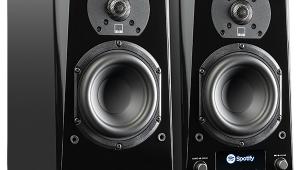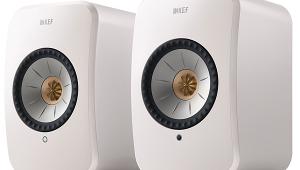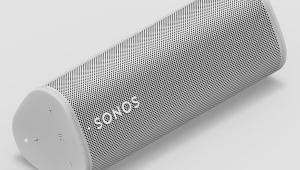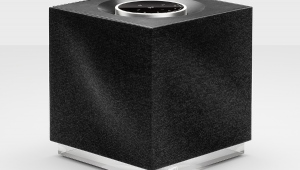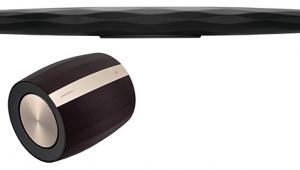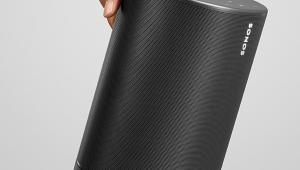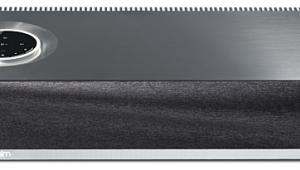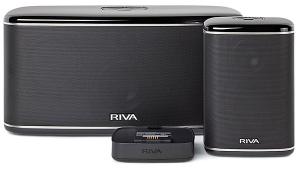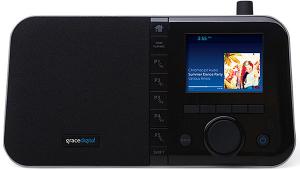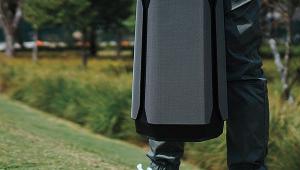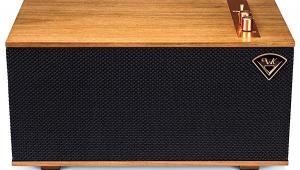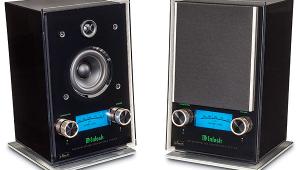SVS Prime Wireless Pro Powered Speakers Review Page 2
Nonetheless, I launched Plan B: partially closing the rear-panel ports with acoustically resistive foam bungs, which, depending on how tight and how dense, shift the cabinet alignment toward sealed-box, yielding a bass roll-off that begins a half octave or so sooner but proceeds at a gentler slope. Now, not everyone will have a vast selection of different-size foam cylinders they've boosted…err…collected from decades of other loudspeaker test subjects, so I confirmed the principle by replacing my chosen bungs with a pair of loosely balled-up microfiber wipes, which proved even better, retaining just a touch more of the upper-bass hump and thus warming bass thump back up just a delicious shade. How do you get to Carnegie Hall? Experiment, experiment, experiment!
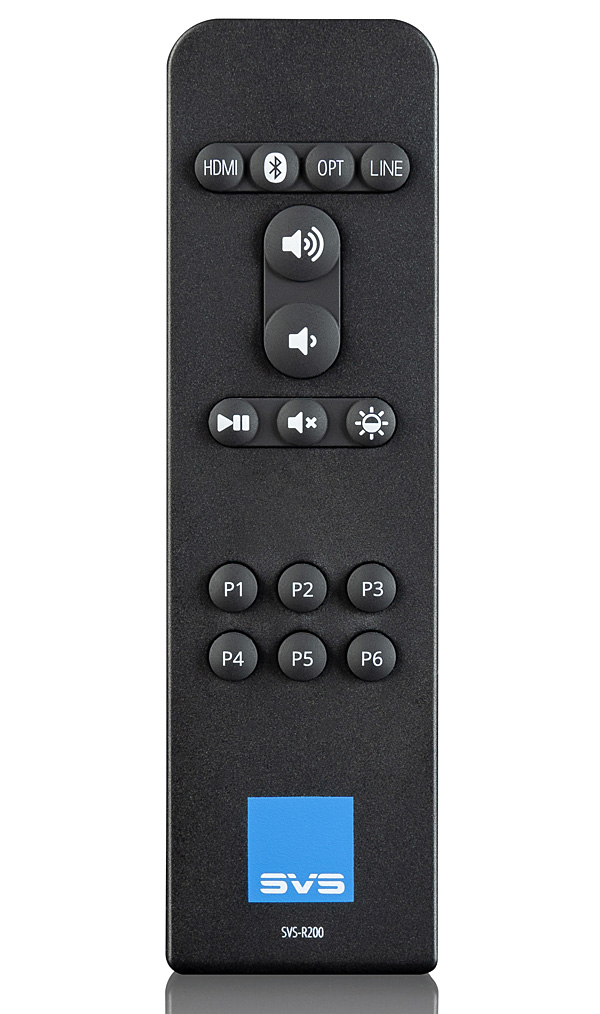
Thus dialed in, the SVS' impressed me with near-perfect tonality on track after track. A beautifully recorded example like "Thanks to You" from Boz Scaggs' album Dig projected his characteristically adenoidal baritone hair-raisingly out in front of the speakers, with pristine articulation and you-are-there room presence but nary a hint of extra nasality that might hallmark any resonances in the Prime Wireless Pros' response. Stereo imaging was fairly tight, but decidedly projected, with instruments locked in position and nicely arrayed laterally, with a modest but welcome element of behind-the-speakers depth
How low do these compact speakers go? Surprisingly so. The above-mentioned Scaggs cut has subtly strong content down to around 35 Hz, and the SVS' delivered it with foundational depth: not quite as powerfully as my considerably larger, three-way everyday monitors (whose larger woofers furnish half again the cone area), but impressively close behind. Even a bass hurdle like Béla Fleck's "Flight of the Cosmic Hippo," my go-to deep-bass stress test for this year, which extends well below 30 Hz with strong descending bass glissandi, impressed me with its fundamental-tone strength on all but the deepest couple of notes.
Large-scale recordings were my next visit, and you can't get much larger than Stravinsky's "Rite of Spring," streamed from an excellent Naxos recording by the Seattle Symphony. The SVS' presented this fine-imaging reading (streamed via Tidal) in a fairly tight window, but with full spatial filling between the speakers and great timbral detail. Cranking up the volume to achieve middle-of-the-hall levels evidenced no signs of strain or loss of bottom-end impact, even on demanding scenes like Part 2's "The Sacrifice/Evocation…," whose brass interjections and tympani explosions stabbed and galloped with authority.
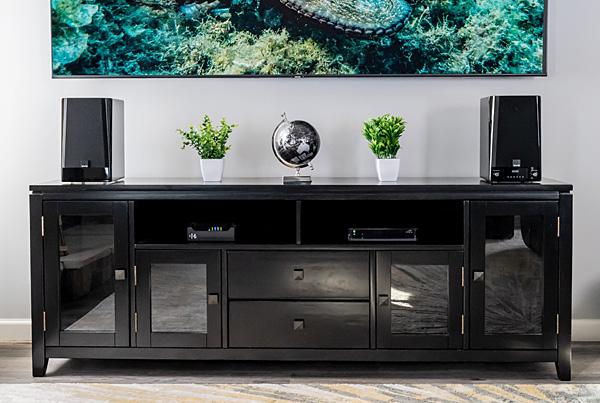
I briefly tried the Prime Wireless Pros' Bluetooth streaming, and both optical-digital and analog-stereo inputs, all without incident. (The Prime Wireless Pros have higher-rez apt/X B.T. on board, but I lack an apt/X source. Apple, are you listening?) I also checked out the SVS' subwoofer facilities, connecting the Prime Wireless Pros' sub out to my long-term sub, a compact design with good power down to below 25 Hz. This also worked as expected, but since the SVS design has solid output to below 40 Hz it was not dramatic on most program material. Connecting a sub automatically invokes a fixed 80 Hz (high pass) crossover on the Prime Wireless Pros' output, but does not apply a lowpass to the output signal, meaning you do have to set it on the sub. I found the best blend when setting my sub's lowpass to 60 Hz, and carefully dialing in the sub's output level and phase, as would be the case with any subwoofer.
As is usual with compact speakers, with the sub relieving them of some of the bass power and woofer-excursion load the Prime Wireless Pros gained substantially in clean peak loudness. But even on their own, the SVS were surprisingly capable. I heard no obvious distortion or dynamic compression when playing well-recorded rock at quite high levels in my 300—plus cubic-foot studio: not quite traditional control-room-playback level, but close enough to give the idea.
To sum up, I was left with no sound-quality reservations on the Prime Wireless Pro's behalf. They're very accurate indeed, and within their size/cost sandbox, highly dynamic and extended.
Of course, in this product category, most shoppers are looking at more than simple SQ. Ergonomically, streaming speakers like the Prime Wireless Pros largely live or die by their handheld-device software source and control apps. Since SVS does not supply a proprietary quarterback (like KEF's KEFConnect for its active models), the DTS Play-Fi app required for setup fills the gap. As I've already mentioned, once set up the Prime Wireless Pros played nice directly with both of my streaming services' native apps, and with Roon, which in civilian life would be my primary interface.
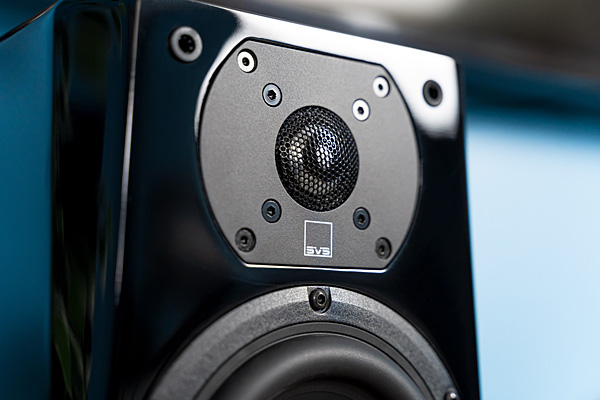
Play-Fi is integral to the Prime Wireless Pros' setup if nothing else, but absent another app also serves as their music controller, with integrated access to most of the popular services plus Internet radio. I generally found the app easy and intuitive for everyday use, though its handling of hires streaming via a dedicated Critical Listening Mode is a bit clunky. While it does show track info, the Prime Wireless Pros' display does not show incoming bitrate, depth, or format data. But, that data is available in the Play-Fi app. Of course, the bottom line is that if it sounds better to you, it is better, so why worry? Play-Fi also allows synchronized playback among grouped speakers, SVS, or other-brand compatible, though Critical Listening Mode disables the sync.
The Prime Wireless Pros' front-panel controls on the right-hand speaker are simple and easy enough to use. Meanwhile, the crisp display shows music data in large enough fonts to be legible from a reasonable distance—about ten feet in my case. The supplied remote is basic, with direct-access keys for HDMI, Bluetooth, optical-digital and line inputs (streaming content automatically selects the network input), volume/mute keys, and a play/pause key that worked with every streaming app I tried. There are also the six preset keys, labeled P1-P6, duplicating the six lighted buttons on the right-hand speaker's bottom edge. These allow you, via the Play-Fi app, to set up six streaming services/playlists, or net-radio-streams, for one-touch recall.
SVS' omission of a USB input, I have already mentioned. It's not a deal-breaker for me, and likely not for most others. Another absence I felt a bit more keenly is the lack of any global equalization options built into the speaker hardware, such as bass-shelving options to compensate for near-wall/free-space locations, midrange EQ to aid desktop placement, or treble-tilt to adjust for room character or listener taste. I understand why SVS might elect to leave this out for simplicity's sake and to keep owners from doing more sonic harm than good. Anyway, the Prime Wireless Pros are frankly too large for typical desktop uses.
Conclusion
At day's end, these are mostly quibbles, though quibbling's what they pay me for. SVS' Prime Wireless Pro is an outstanding solution for a one-box or rather a two-box sound system that more than scratches the surface of what audiophile listening is all about. They're accurate and dynamic to a fault, ultra-compact, easy to set up and use, and more than able to fill even medium-sized rooms at serious-listening levels without stumbling. You'd be hard-pressed to duplicate this recipe with individual components and passive speakers of similar size at twice the price. Or more.
